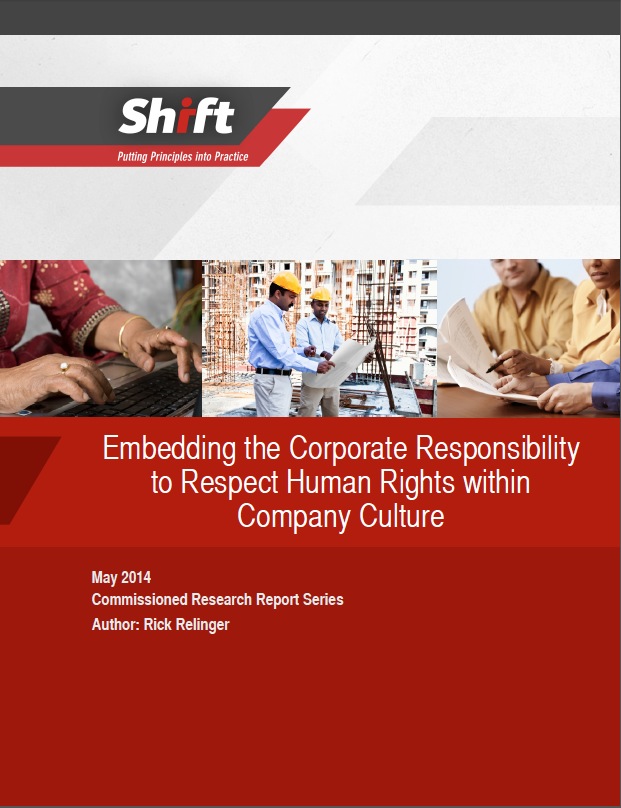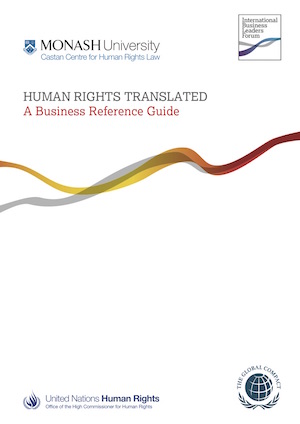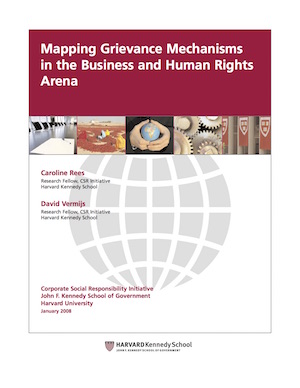Summary
A company’s ability to carry out human rights due diligence depends on the extent to which respect for human rights is embedded in company culture. Company personnel should be:
- aware of the human rights risks related to their functional responsibilities;
- empowered and incentivized to conduct their work in a manner that respects human rights.
The challenge of embedding new values within company culture is not exclusive to human rights. The field of change management and environmental, health, and safety management processes both seek to transform corporate cultures that are insufficiently responsive to issues that inhibit improved business performance.
Based on twelve interviews with company representatives and corporate sustainability advisors spanning four continents, this study identifies four common gaps in progress towards embedding respect for human rights in corporate culture:
- Abstract language used to frame human rights: Although the International Bill of Human Rights and the ILO’s Declaration on Fundamental Principles and Rights at Work enumerate internationally recognized human rights and can be an important reference point for corporate-level policies, personnel’s national and professional cultures shape their understanding of how human rights relate to their business activities. If human rights issues are not described in a manner that is consistent with their national and professional background, people fail to appreciate the scope of applicable human rights and the scale of individuals and communities that can be affected by their work. Consequently, corporate-level commitments will not be incorporated into operational practices.
- Excessive “happy talk”: Companies publicize their positive human rights performance and community leadership internally. Yet, employees are only exposed to potential and actual human rights impacts through such happy talk. The geographic distance of desk-based staff from vulnerable individuals and the narrow functional responsibilities of operational-level staff prevent adequate recognition of the human rights risks linked to their professional conduct. Without explicit guidance, training, or incentives to consider the connection between business practices and human rights, internal happy talk fosters a culture of complacency regarding human rights risks.
- Delegating ownership of impacts to those who can’t fix them directly: While human rights specialists are needed to provide expertise, the responsibility for human rights compliance is rarely shared between specialists and the appropriate functions or business units. The dependence of both business unit managers and operational-level staff on such specialists separates the responsibility for exercising due diligence from the actual function or business unit associated with the risk. When this responsibility is delegated almost entirely to specialists, the effectiveness of human rights due diligence processes depends on their ability to convince business functions to modify their conduct. Yet, they often lack the necessary seniority and influence internally to do so.
- Toothless cross-functional committees: Cross-functional working groups are intended to facilitate the coordinated implementation of human rights commitments but several company representatives reported no involvement by business unit management. The participation of business units provides such committees with the influence, credibility, and expertise needed to change operational-level conduct.
An in-depth analysis of change management literature, and environmental, health, and safety consultancy guidelines reveals processes that have been successful in promoting the shared ownership of other forms of due diligence. Companies can apply the following five lessons on embedding to more effectively exercise human rights due diligence:
- Consistently communicate human rights in accessible terms.
- “Seeing is believing”: expose relevant personnel to the realities of the company’s impact on human rights, and its management of those impacts.
- Tailor guidance on human rights risk management for specific functions, to make human rights risk management more tangible and actionable on a day-to-day basis.
- Develop leading human rights indicators: Leading indicators focus peoples’ attention on the consequences of their own decisions and practices.
- Create broad-based performance evaluation criteria for exercising due diligence: Peoples’ sense of professional responsibility is reinforced by explicit incentive and accountability measures.
These lessons demonstrate that the successful embedding of human rights occurs neither unintentionally nor as the result of a single incident. Rather, embedding involves a deliberate set of processes that incrementally foster a company culture that respects human rights.


